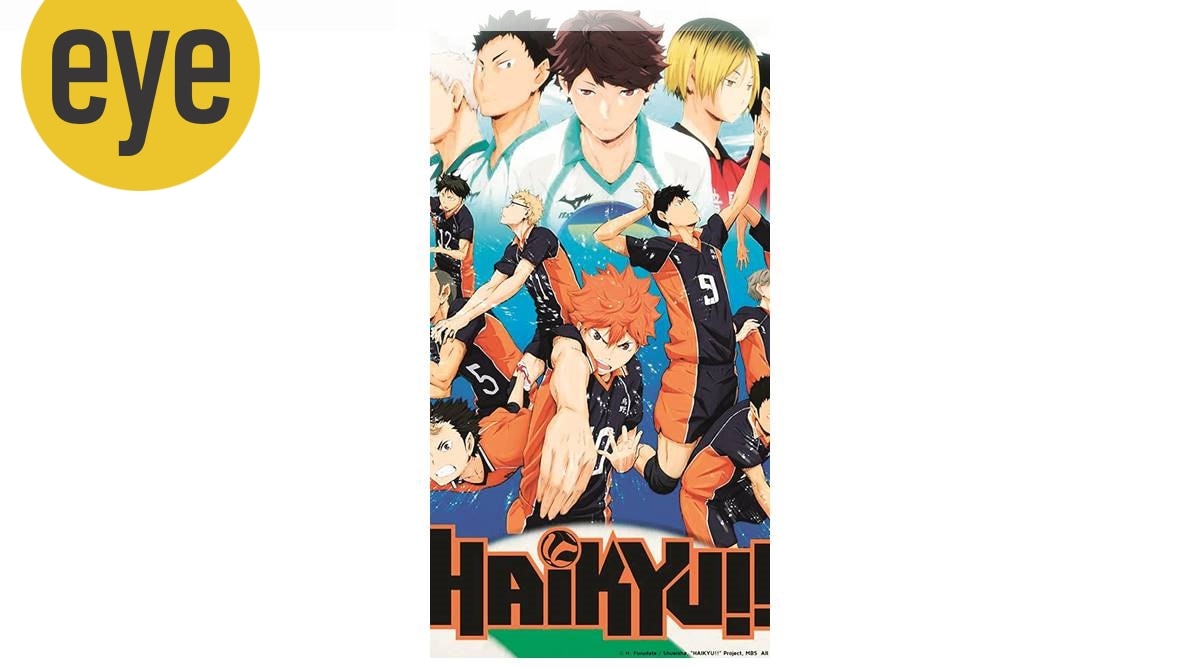 Faster, higher, stronger: Cover of the first volume of Haikyu!!
Faster, higher, stronger: Cover of the first volume of Haikyu!! From 1964 to 2021, the relationship between Olympic Games and anime has come full circle. Four years after the 1968 “TV Olympics” in Tokyo — called so for being the first to broadcast the action live to the world — the first sports anime Kyojin no hoshi began airing adventures of a baseball aspirant.
Since then, sports anime has become a major subgenre of Japanese animation. There’s manga and anime dedicated across the board — mainstream sports such as baseball, football, tennis; niche ones like table tennis, gymnastics and wheelchair basketball, and even activities such as shogi (chess), mahjong and fishing.
As opposed to their Western counterparts, these stories revolve around the moral code of Bushido, depicting sport as a test of human values and spirit. The descriptor for sports anime is supo-kon — a contraction of “sports” and “konjo” (guts). And there can’t be a better example of supo-kon than volleyball anime.
At the 1964 Games in Tokyo, Japanese women won the inaugural volleyball gold medal and caught the world’s eye. The historic triumph came two years after they beat the mighty Soviet Union at the World Championships. Thus began a dynasty. Between 1962 and 1977, the team won six world titles — including two Olympic gold and not counting two silver medals. Anime and manga were there to capitalise on each high.
Two volleyball mangas — Attack No.1 (1969-71) and Ace wo Nerae (1973-80) — featured all-female cast of spikers looking to make it to the top. As on-court success increased the popularity of women’s sports, sports manga brought numbers to women demographics. Attack on Tomorrow (1977) was created as a tribute to the volleyball gold medallists at the 1976 Olympics and was released to coincide with the 1977 World Cup win.
Though real-life triumphs dried up, Japan’s love for volleyball anime hasn’t subsided. Haruichi Furudate, who played volleyball as a middle blocker, created the manga-turned-anime Haikyu!! (2012-20). The Japan volleyball league is a frequent collaborator and players appear in the show regularly. Yuji Nishida — national team member and one of Japan’s most exciting prospects — revealed in an interview with Weekly Shonen Jump magazine that moments in the show hit too close to home.
It’s not just volleyball. In a 2016 study, researchers at University of Tsukuba noted that Hono no Tokyuji: Dodge Danpei (1991-92) popularised dodgeball in Japan to the point that it became a national competition. Yawara! (1989-92), the story of a young judoka training for the 1992 Barcelona Olympics was conceptualised after judo was picked to be an Olympic sport at the actual Barcelona Olympics. Each episode ended with a countdown to the Games. Basketball anime SLAM DUNK (1993-96) resulted in the significant increase in the number of junior high-school boys and girls playing basketball.
Baseball, by far, has been the muse for the majority of sports anime. The stranglehold was briefly broken in the 1990s when artists turned to football. Between 1991 and 1994, six football-themed shows hit TV, coinciding with the launch of the Japanese professional football league (J-League) in 1993.
With the Olympics back in town, the organisers, understandably, are tapping into the profound catalogue of anime. Last March, a satellite carrying figures from the sci-fi anime Mobile Suit Gundam was launched to celebrate the Olympics. The mascots Miraitowa and Someity sport signature anime designs. Characters from Sailor Moon, Naruto and Astro Boy are seen wearing national jerseys and are being used as Tokyo Olympic ambassadors. The Olympic Museum hosted the “Sports x Manga” exhibition last year, calling the artform “a perfect tool to understand the evolution of sport in post-War Japan.”
- The Indian Express website has been rated GREEN for its credibility and trustworthiness by Newsguard, a global service that rates news sources for their journalistic standards.
 Continue with Facebook
Continue with Facebook Continue with Google
Continue with Google
